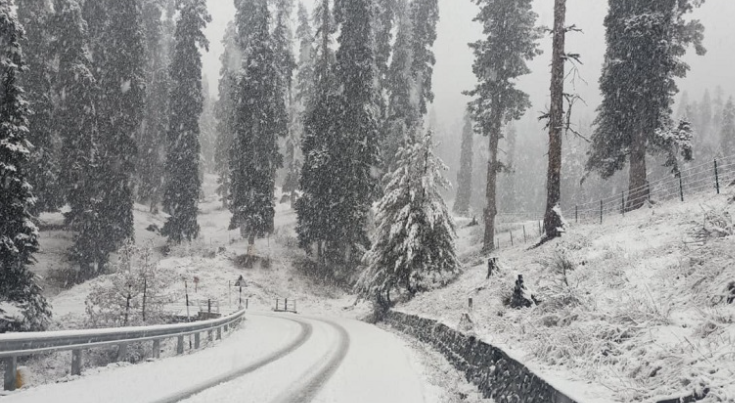Light snowfall likely in higher reaches of Kashmir

STATE TIMES NEWS
Srinagar: The minimum temperature across Kashmir rose slightly to provide some respite from the intense cold conditions even as the weather office predicted the possibility of light snowfall in some higher reaches, officials said here on Friday.
However, the night temperature, which settled several degrees below the freezing point, was still below normal for this time of the season at most places.
The continued sub-zero temperature has led to the freezing of several waterbodies, including the Dal Lake, here as a thin layer of ice formed over their surface.
Srinagar city recorded a minimum temperature of minus 3 degrees Celsius on Wednesday night, compared to minus 3.8 degrees Celsius on the previous night, the officials said.
Pahalgam in south Kashmir’s Anantnag district, which serves as one of the base camps for the annual Amarnath Yatra, recorded a minimum temperature of minus 4.5 degrees Celsius, up from the previous night’s minus 5.1 degrees Celsius, they said.
Gulmarg skiing resort in north Kashmir recorded a low of minus 3.5 degrees Celsius up from the previous night’s minus 4.2 degrees Celsius, the officials said.
Qazigund recorded a low of minus 3 degrees Celsius while Kokernag town saw the minimum settle at minus 2 degrees Celsius and Kupwara recorded a minimum of minus 2.6 degrees Celsius.
Kashmir has been going through a prolonged dry spell, and December month was 79 per cent deficit on rainfall.
There has been no snowfall in most plain areas of Kashmir while upper reaches of the valley have also received lesser than usual amount of snow by the end of December.
The meteorological department has said there is a possibility of very light snow over isolated extreme higher reaches on Friday.
While the weather would remain mainly dry weather till January 7 evening, there is a possibility of light snow over isolated areas in the higher reaches of Jammu and Kashmir on January 8-9, it said.
Kashmir is currently under the grip of ‘Chilla-i-Kalan’ — the 40-day harshest winter period when a cold wave grips the region and the temperature drops considerably leading to the freezing of water bodies, including the Dal Lake, as well as the water supply lines in several parts of the valley.
The chances of snowfall are the highest during this period and most areas, especially the higher reaches, receive heavy snowfall.
‘Chilla-i-Kalan’ will end on January 31. However, the cold conditions will continue after that with a 20-day-long ‘Chilla-i-Khurd’ (small cold) and a 10-day-long ‘Chilla-i-Bachha’ (baby cold).
